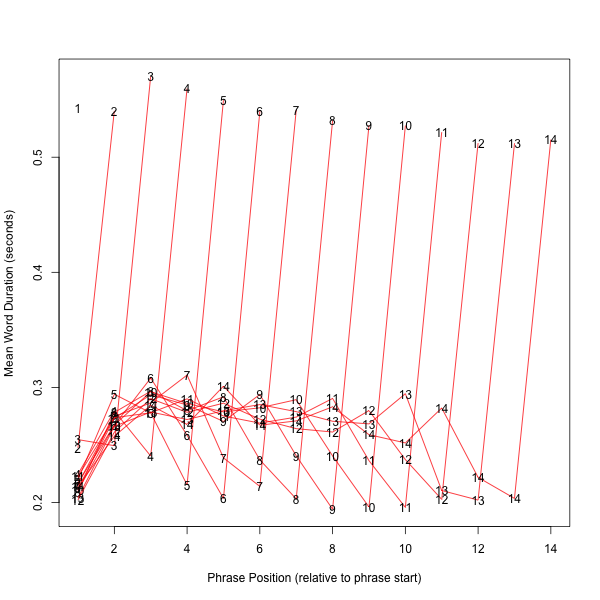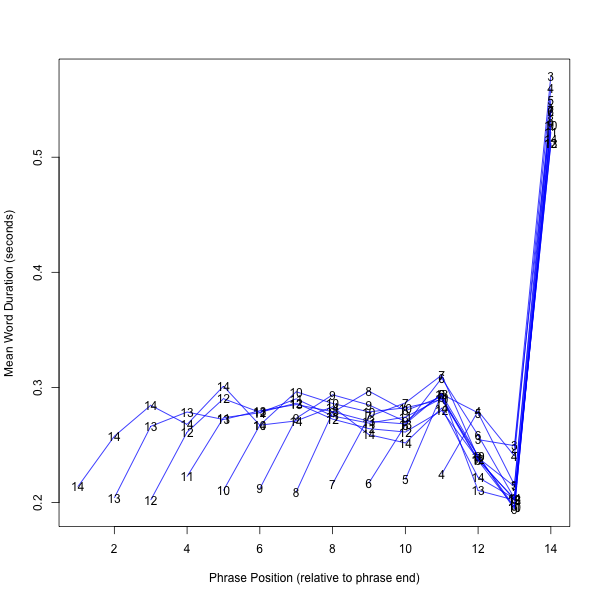From the Transactions of the Philological Society, 1873-74, "VIII. — On the Physical Constituents of Accent and Emphasis: By Alexander J. Ellis, Esq., President":
Phonautographic Sound-curves. Any disturbance in the air produces a series of alternate condensations and rarefactions, which, coming in contact with the drum of the ear, cause it to vibrate, in such a manner as to produce, after various internal modifications, the well-known sensation of sound. The most convenient way of analyzing this sensation is to analyze the motion of a single point in the drum of the ear. This is effected by an instrument called the phonautograph, consisting of a metal paraboloidal reflector (answering to the passage leading to the drum of the ear), truncated by a plane passing through its focus and perpendicular to its axis, over which opening is stretched a delicate membrane, ordinarily bladder (answering to the drum of the ear). At one point of this membrane is fixed a style (ordinarily a piece of quill), which rests against a cylinder, over which is rolled a piece of paper delicately coated with lampblack. A disturbance of the air inside the reflector causes the style to move backwards and forwards on the lampblacked surface, which it scrapes off. If the cylinder remain at rest, this produces a white straight line of moderate length. But if, as is usual, the cylinder be caused to revolve with a uniform motion, the style scratches out a white undulating line, which may be called a sound-curve, and which is the visible symbol of the invisible disturbance of the air.
Read the rest of this entry »


